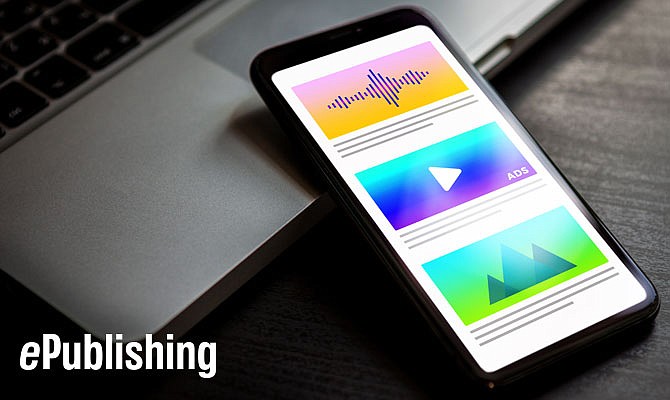
News
10 Steps to eNewsletter ROI
January 3, 2014

News
January 3, 2014
As a publisher, you know how Enterprise Publishing technology can give your editorial process a BIG assist. Managing all of your content assets from a single dashboard will have that effect. And aren’t we all looking for tools and tactics to streamline an increasingly complex process to create once, and deliver quality content where your readers need it?
As you look at publishing software, spend some time thinking about a critical component to virtually all online businesses these days: eNewsletters.
It’s likely that eNewsletters and email marketing are already important parts of a content strategy to build your brand. For most of us, creating, testing and sending truly engaging eNewsletters consumes a lot of energy. At times, this process can get in the way of creativity and quality.
Every newsletter should be the best representative of your business, and maintaining that level of quality on a daily, weekly, or even monthly basis can be frustrating. Perhaps that frustration has prompted you to question the value?
In case you need a little motivation, remember that email newsletters generate a return greater than subscription or ad revenue:
It’s true; the eNewsletter is not old news. It is still one of the most valuable tools to engage your audience by targeting specific interests. But how do you increase the value? By making it easier to produce and distribute and by tying it to your website, of course. How?
Here are 10 steps to streamline your eNewsletter workflow
1. Integrate.Tying together your publishing system with your email service provider is the essential starting point that leads to editorial efficiencies while adding value for your readers, advertisers – and you! Your EPS is designed to manage content while your email service provider is focused on delivery. Integration let’s you make the most of each system’s strengths.
2. Cut editorial time – no more cutting and pasting. Many publishers create articles in their CMS, then log into their email service to cut and paste the article headline and teaser into an email template. Then they cut blog headlines and teasers, place ad codes in ad zones, etc., etc. It’s quite a labor-intensive workflow to gather, assemble and transfer all the moving parts of an eNewsletter from various systems to an email template. Thinking about adding video? Good luck with that process.
Integration creates an entirely different workflow:
The result: reduce the time to create an eNewsletter from hours to minutes.
3. Automate.When you create content in an EPS that is integrated with your email service, you can automate the entire process of sending an eNewsletter or Topic Alert. You set the parameters: every time you publish an article on a specific topic, a Topic Alert is sent to readers who have opted in. You control the frequency: hourly, daily, weekly or whenever a specified number of articles is ready to be published.
4. Synchronize Your Lists.Integration with your email service provider includes the automatic synchronization of registration and subscription data from your website to your email lists. Subscribers are automatically added or removed, giving you a head start on segmenting your audience and managing subscriber preferences.
5. Leverage Your Data.Your eNewsletter content is no different from other content. You want every contact with your audience to be relevant, with targeted content delivered when it is needed. Your EPS should provide a wealth of audience behavioral data, telling you who is viewing what content, when. Combining behavioral data with eNewsletter reporting will give you even deeper insight that will drive your content strategy, marketing, product development and renewals.
6. Topic Alerts = Ad Revenue.As with Topic Pages on your website, Topic Alerts add value for sponsors and advertisers who want to target a specific segment of your audience. Advertisers can buy exclusive exposure to readers who want to be alerted any time you publish a topic related to your advertiser’s product or service.
7. Highlight Revenue Generating Features. Including new Buyers Guide listings or Upcoming Events in your eNewsletter provides a valuable resource to readers, and adds value for sponsors by directing traffic to a specific feature on your website – increasing views and leads.
8. Build Community. Readers must be able to share your eNewsletter or articles via social media. Social media extends our reach far beyond traditional marketing and renewal campaigns. Tap your subscribers to build audience and interaction; leverage your marketing dashboard to understand how visitors are finding out about your site and newsletter.
9. Engage, Engage, Engage. With a Media Manager built into your editorial tools, it’s easy to link to video, images, audio and other media to deliver engaging content within your eNewsletter.
10. Multiply. With one dashboard and all the time it saves, you can produce multiple newsletters to suit a variety of interests and specialties.
Now that you have all the eNewsletter parts working together, you’ll be able to manage other parts of your business more efficiently than ever: automate renewal notices, confirm purchases, send event and webinar reminders – just to name a few functions to improve your ROI.
Looking for Examples?
It’s one thing to read what an EPS can do for your eNewsletters. It’s another to see it in action.
Grand Rapids Business Journal provides a stellar example of the benefits. The journal website relaunched with multiple newsletters, targeting different readers within the business community to build awareness and offer free trial access to premium content. Newsletters are part of a content marketing strategy that produced a 500% increase in traffic.